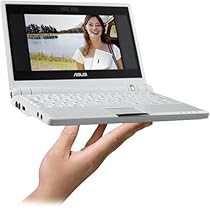Computers are both part of the problem and part of the solution to climate change. ICT Professionals are working on ways to reduce carbon emissions from computers and to use computers to reduce emmissions from other industries. The Australian Computer Society (ACS) and the Australian National University (ANU) are working on how to train people to use technology to reduce.
A study sponsored by the Australian Computer Society has shown that computers and telecommunications equipment in Australia generated 7.94Mt of carbon dioxide in 2005, 1.52% of national emissions. ICT professionals at the Australian National University set up a special interest group of the ACS to look at the issues and plan future measures. The ACS has sponsored the development of a course on "Green ICT. This course is part of a globally accredited system for training ICT professionals. The course content is also available free on the web for use by anyone interested. It is planned to also offer a version of the course at the ANU in second semester 2009.
The Australian Government released its Carbon Pollution Reduction Scheme White Paper 15 December 2008. This proposes a CO2 reduction target of 5 to 15 per cent below 2000 levels by the end 2020. This is much less than the 5 to 40% recommended by the IPCC. The Climate Group proposed reduction via ICT is 15%. The ACS will be teaching Green ICT techniques, to achieve this reduction starting 18 January 2009. This is without the need to make major changes to industry or lifestyle.
Computer makers are issuing claims as to the green credentials of their products and Australian Government agencies are now requests for tender including complex sustainability criteria. How are ICT professionals to be trained to assess such claims and evaluate these criteria?
The Natural Edge Project, an Australian based independent Sustainability Think-Tank, has produced the Sustainable IT Lecture Series. This is a free education package for training ICT professionals in sustainability. The package focuses on energy efficiency and draws on case studies of real world energy saving projects.
- Drivers and Benefits of Sustainable IT: The aim of this lecture is to discuss the drivers and benefits of Sustainable IT, particularly for the customer. Drivers and benefits range through business, economic, environmental and legislative domains.
- Product Service Systems and the Product Cycle: The aim of this lecture is to discuss product service systems, their barriers and lessons from past implementations, as well as the opportunities to reduce energy and materials consumption in packaging and equipment through end-of-life processing.
- Client Equipment: The aim of this lecture is to discuss a four-step process for reducing energy consumption, materials consumption and materials toxicity in client equipment.
- Data Centres and HP Case Study: The aim of this lecture is to discuss a seven-step process for reducing energy consumption in data centres and to present a Sustainable IT case study of IT vendor HP.
- Roadmap and Success of Sustainable IT: The aim of this lecture is to discuss the strategies, activities and actions upon which customers and vendors should focus in order to successfully transition to, maintain and promote their Sustainable IT solutions at the organisation and industry level.
- References: This document contains the full citations for the references in the Lecture documents.
Adapted from: Sustainable IT Lecture Series, "Sustainable IT: Reducing Carbon Footprint and Materials Waste in the IT Environment", The Natural Edge Project, 2008
Most of the examples are from the project sponsor HP, and focus on the company's methodologies for energy reduction (but this is not just some company greenwash). The material is suitable for use in tertiary education for ICT practitioners, engineering and related disciplines. The lecture notes would also be useful for self study by practitioners interested in learning about energy saving techniques. The material is available free for educational use via an open access licence.
The Australian Computer Society hosted a presentation from TAFE NSW 17 November 2008 on their new ICT sustainability courses. Five new modules are to be offered in 2009, based on projects undertaken by students at Petersham Campus of NSW TAFE.
- Install and Test Power Saving Hardware
- Install and Test Power Management Software
- Install and Test Renewable Energy System for ICT Networks
- Implement Server Virtualisation for a sustainable ICT System
- Install and Test Web 2.0 OS and Applications on a Low Powered Workstation Fed by Power Over Ethernet
The courses have a practical emphasis, with students working on PCs replacing components with lower power ones, including low power motherboards and flash drives. The students may also install solar panels and a wind generators and modify PCs to run from batteries.
As well as hardware, the students learn about using software utilities to configure energy saving settings on PCs. They also learn how to virtualise servers, including the complexities of running both Linux and Microsoft Windows operating systems simultaneously on the one server.
The courses have already provided some of the very valuable practical insights into Green ICT, such as
- Via PC3500 Mainboard: After searching the options for low power components, the students of the TAFE course identified the new VIA board as being a good trade off between power consumption and usability. It remains an open question as to if it is worth upgrading conventional desktop PCs with low power boards, or better to replace them with a small form factor NetTops.
- Power Management Tools, such as LocalCooling can be useful for teaching about power saving as well as implementing it.
- ROI: The return on investment for power saving software and hardware upgrades can be calculated.
- Learning by Doing: Students can learn by carrying out work such as upgrading PCs and explaining what they are doing while working in teams.
Some links from the TAFE:
- Sustainability Project Presentation 2nd July 2008
- Certificate IV in IT Semester 2 2007: Virtual Server Implementation
- and Case Study - Low energy desktop system Patjarr School
- Certificate IV in IT Semester 1 2008: low energy desktop design considerations and Operating system on USB flash drive
- Ubuntu server with renewable energy system supply - design.ppt
- Diploma in IT Semester 1 2008: Solar Panel and Wind Generator
- Solar Panel Installation and System Testing Presentation: Low Energy Consumption PC Cary
The Australian Computer Society is preparing a course on Green ICT Strategies for Computer Professional Education Program. This program has been accredited globally for training ICT professionals internationally and is aligned with the Skills Framework for the Information Age (SFIA).
The course content is being Prepared online as free open access. For progress see blog entries. It may also be offered at the ANU as a "flexible" blended course, combining e-leaning and classroom work.
There is potential for collaboration between the university and vocational sectors on green ICT courses. University postgraduate management units and will not get into the level of technical and practical detail which the TAFE provides. Some professionals will want to undertake the TAFE courses, while others just need to know that they can call on people with those skills.



 TAFE Students Install Wind Generator
TAFE Students Install Wind Generator